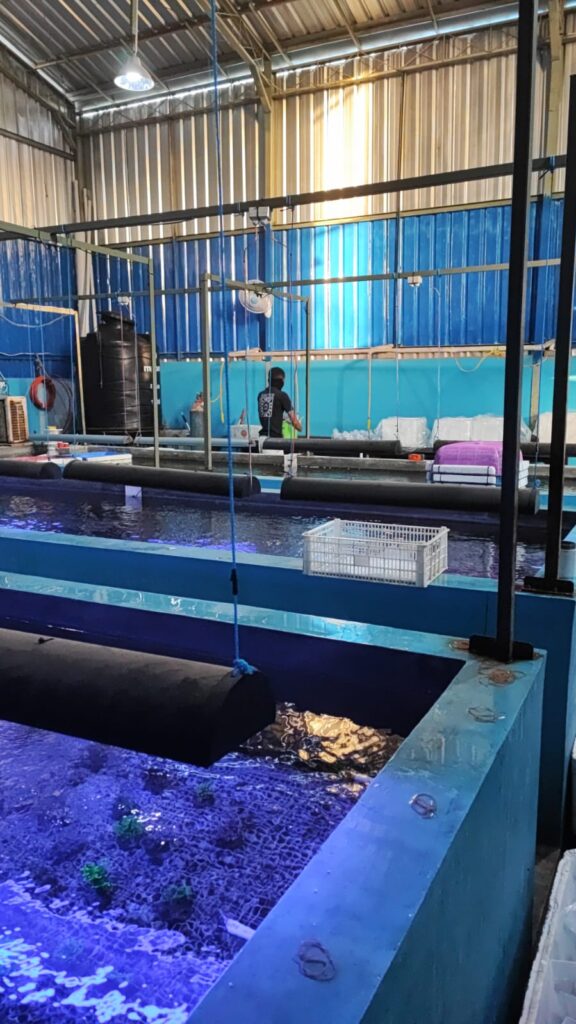When evaluating how to propagate marine animals, one has to examine the different options that there are. Three basic principals are used for most commercial sources of the ornamental fish trade.
The oldest form is to let nature take care of the propagation and just start collecting species from the wild. This type of commercial exploitation had the hardest and long lasting negative impact on the natural environment. Methods used for it like use of toxic substances to immobilize fish and over-harvesting are only a few problems associated with this outdated approach. Countless reefs have been decimated and damaged and government intervention seeks to end this approach in favor of more sustainable alternatives. Many workers that used to fish and harvest coral in the wild are now employed in projects that seek to protect and repopulated reef structures in various locations throughout the island nation.
The two alternatives to wild harvesting is aquaculture. We talk about raising ocean dwelling species in controlled environments on land or in the ocean itself. We know for example of large salmon farms in Europe that help to satisfy the ever increasing demand for fresh fish. Although that type of farming has been in the crosshairs of environmentalists for increasing the level of biomass and pollutants in coastal regions near the farming operations, proponents to those aquaculture operations cite a recovery of wild populations due to an ease of demand on the fishing grounds. So every aspect has some pro and cons and it is a challenge to find the right balance. In southeast Asia the coral farming is done in two ways: in containers and in controlled facilities on land or in the ocean in shallow waters in the lagoon. The question for us was which approach to take. While container based coral farming allows for more environmental control, it proves also to be the most costly in our location. Land is to be had at a premium price. The cost to built a land based coral farming facility like that in a tourist destination is exponentially high and would increase the price of our product quite a bit. Instead we decided to place the farming operation into the ocean. While we still have to pay a leasehold to the government, it is the more budget conscious way to grow coral in aquaculture in Bali. We still have preparing, packing and shipping operations that take place in our brick and mortar facility. But the demand for space is much less and more manageable. The challenges of ocean based aquaculture farming are the unpredictability of the environment. Our crop is more exposed to weather and outside factors. One boat that overlooks the restricting markers of the waterways can cause hundreds of thousands in damages. Storms, heatwaves, pollution and other adverse conditions can affect our the success of our aquaculture operation. After all, we farm where other vacation, travel and pursue their various activities. But the advantages by far outweigh the challenges. We are able to prevent wild harvest in our beautiful reefs, and we are even able to supply some coral to restoration projects. Our process does not employ any polluting procedures. And our farm increases the amount of coral larvae that is released into the current. So in some sense we help to passively populate far fetched destinations. Coral Aquaculture is the environmental sensitive solution to large commercial demand of live coral.


